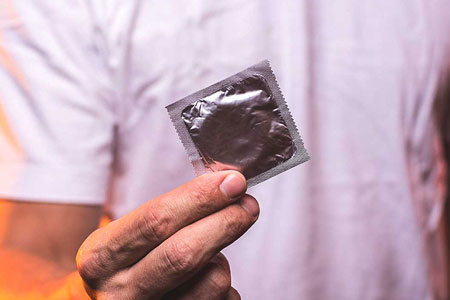How the Raising STD Rates Will Affect Casual Sex
 Sexually transmitted disease rates have been rising in the United States in the last few years. There are several reasons for this, not all of them are what you would think. Most have nothing at all to do with the moral or sexual behavior of people. It might seem a natural conclusion to believe it will slow down the rate of casual sex occurrences, but will it? Americans are uncomfortable talking about sex and anything related to it, including sexually transmitted diseases. This is part of the reason rates are so high. People do not even want to use their health insurance to pay for treatment. Another contributing factor is that the U.S budgets millions of dollars to fund public school programs for abstinence until marriage, which has been proven ineffective. Yet, only four hours per year is spent talking about sexually transmitted diseases and teen pregnancy. Is it any wonder that STD rates and casual sex are simultaneously raising? Medical professionals blame the epidemic not on a moral discrepancy, but a lack in healthcare funding and policies.
Sexually transmitted disease rates have been rising in the United States in the last few years. There are several reasons for this, not all of them are what you would think. Most have nothing at all to do with the moral or sexual behavior of people. It might seem a natural conclusion to believe it will slow down the rate of casual sex occurrences, but will it? Americans are uncomfortable talking about sex and anything related to it, including sexually transmitted diseases. This is part of the reason rates are so high. People do not even want to use their health insurance to pay for treatment. Another contributing factor is that the U.S budgets millions of dollars to fund public school programs for abstinence until marriage, which has been proven ineffective. Yet, only four hours per year is spent talking about sexually transmitted diseases and teen pregnancy. Is it any wonder that STD rates and casual sex are simultaneously raising? Medical professionals blame the epidemic not on a moral discrepancy, but a lack in healthcare funding and policies.
STD Rates Have Been On A Big Raise The Last Few Years
The newest report from the Center for Disease Control, 2016, reports chlamydia, gonorrhea, and syphilis all became more prevalent between 2015 and 2016. HIV and Herpes were not included in their report. HIV has consistent went down over the past ten years. Doctors are not required to report herpes diagnosis like they are other venereal diseases. The Center for Disease Control reported 470,000 new instances of gonorrhea, 1.6 million cases of chlamydia, and around 28,000 syphilis diagnoses. The amount of chlamydia diagnosis rose by 4.7%. Reports show increases in all districts of the country. Reported cases of gonorrhea, which were at an all-time national low in 2009, rose by over 18% from 2015. Syphilis diagnosis hit a historic low in 2000 but has increased gradually since then. STD statistics saw an almost 18% increase from 2015 to 2016, in both men and women across all areas. Syphilis is most prevalent among homosexual men, but infection rates in women rose by nearly 36% in 2016. A number more than double the increase for men.
While these types of infections are usually easily treatable, that isn’t always the case. The evolution of germs to dodge the antibiotics humans create to kill them causes new problems every year. Reports from the World Health Organization show that gonorrhea consistently morphs and changes and becomes resistant to the drugs used to fight it. Chlamydia is also becoming more and more resistant to pharmaceuticals. While these infections are becoming more resistant to drugs, very few new drugs are being developed to fight them. This leads to more people contracting the infections. The raising STD rates affect people in many ways including but not limited to sex.
Raising STD Rates Should Lead To More Condom Use
Raising STD rates do not lower the amount of casual sex being had but it does increase condom use and make one-night-stands less of a thing. Instead, people keep a sex buddy they trust close in their friend circle. The nights of picking up strangers at the club are mostly gone. It still happens on occasion, but most casual sex partakers will use a condom at all costs when raising STD rates are this dramatic. A sex buddy is a much better choice, if you can find one. A sex buddy is someone you know and care for as a friend, but you also have sex with that person. It isn’t noncommittal, but it isn’t a romantic relationship either. You give each other the respect of a close friendship but do not hold each other to relationship rules.
Nothing is going to stop or even slow down casual sex. No matter what happens in human existence, people will always seek out casual sex. (Learn the different types of casual sex) It is a part of humanity. We are compelled to couple despite all dangers and risks. What changes are the outside factors. Raising STD rates affect things like the ways we have sex and the circumstances. It affects the type of sex and how we protect ourselves. It even affects the toys we use and the times we engage in sexual behavior. Rest assured, however, we still have causal sex and always will.